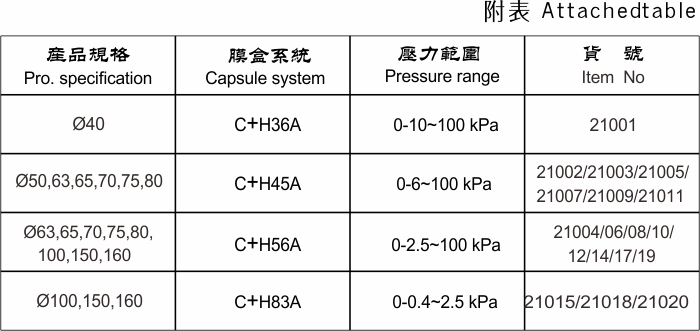
नवम्बर . 16, 2024 11:34 Back to list
differential pressure gauge diaphragm type
Differential Pressure Gauge Diaphragm Type
In various industrial applications, monitoring and measuring pressure differentials is crucial for ensuring processes run smoothly and safely. One of the most effective tools for this purpose is the differential pressure gauge, specifically the diaphragm type. This article explores the functionality, design, and applications of diaphragm type differential pressure gauges, highlighting their advantages and significance in engineering and process management.
Understanding Differential Pressure Gauges
Differential pressure gauges measure the difference in pressure between two points in a system. They are essential in systems where pressure-related changes can affect performance or safety, such as in HVAC systems, water treatment facilities, and chemical processing plants. A differential pressure gauge provides essential data that helps in observing flow rates, detecting blockages, and maintaining optimal conditions in various processes.
The Diaphragm Mechanism
The diaphragm type differential pressure gauge utilizes a flexible diaphragm as its sensing element. When pressure is applied to the diaphragm from two sides (inlet and outlet), it deflects based on the difference in pressure. This deflection is converted into a readable measurement, typically displayed on a dial or digital readout. The diaphragm can be made from various materials, including stainless steel, rubber, or polymer, depending on the specific application and the media being measured.
Design and Construction
The design of a diaphragm differential pressure gauge consists of several key components
1. Diaphragm The heart of the gauge, often shaped like a bowl, responds to pressure changes. 2. Sealed Chamber This chamber contains the diaphragm and isolates the pressure body's media to prevent contamination. 3. Transmission Mechanism It converts the diaphragm's movement into a measurable reading. This can include mechanical linkages or electronic sensors. 4. Scale and Display Indicates the measured pressure difference, allowing operators to monitor system conditions easily.
The construction of diaphragm type differential pressure gauges allows for high accuracy and reliability
. They are designed to handle harsh environments, including high temperatures and corrosive materials, making them suitable for various industrial applications.Advantages of Diaphragm Differential Pressure Gauges
differential pressure gauge diaphragm type

1. High Sensitivity Diaphragm gauges can detect small changes in pressure, providing more accurate readings compared to other types of gauges. This sensitivity is vital in applications requiring precise pressure control.
2. Durability Thanks to robust construction materials, diaphragm pressure gauges are resistant to wear and tear. They can function effectively in extreme conditions, including high pressure, temperature fluctuations, and corrosive environments.
3. Minimal Maintenance Diaphragm gauges are generally low maintenance due to their simple designs and sealed chambers, which limit exposure to contaminants.
4. Versatile Applications These gauges can be employed in a wide range of industries, from water and wastewater treatment to pharmaceutical manufacturing and food processing.
5. Easy Installation and Calibration Diaphragm types are straightforward to install and can be calibrated easily, which saves time and resources during setup.
Applications
Diaphragm type differential pressure gauges find their application in numerous fields
- HVAC Systems Monitoring pressure drops across filters to ensure adequate airflow. - Flow Measurement Determining flow rates based on pressure differentials in pipes and ducts. - Process Control in Chemical Plants Ensuring desired pressures are maintained within reactors and storage tanks. - Liquid Level Measurement Using pressure differentials to gauge the level of liquids in tanks and silos.
Conclusion
In summary, diaphragm type differential pressure gauges are vital instruments that provide reliable measurements essential for the efficiency and safety of industrial processes. Their high sensitivity, durability, and ease of use make them a preferred choice in diverse applications. As industries continue to evolve, the importance of accurate pressure measurement tools will only increase, reinforcing the significance of diaphragm type differential pressure gauges in modern engineering practices. By ensuring the proper installation and maintenance of these gauges, operators can achieve optimal performance, reduce downtime, and enhance overall operational safety.
-
High-Precision 5 Valve Manifold Differential Pressure Gauge Suppliers
NewsApr.29,2025
-
High-Precision Diaphragm Vacuum Pressure Gauges Manufacturers & Quotes
NewsApr.29,2025
-
Omega Differential Pressure Gauges High Accuracy & Durability
NewsApr.28,2025
-
Low Pressure Differential Pressure Gauges Precision Solutions & Quotes
NewsApr.28,2025
-
Digital Diaphragm Pressure Gaauge Precision Measurement & OEM Quotes
NewsApr.28,2025
-
Differential Pressure Gauge China Price High-Accuracy & Best Quotes
NewsApr.28,2025
